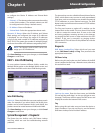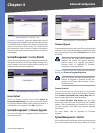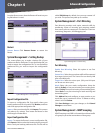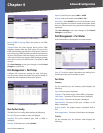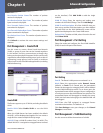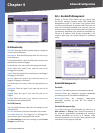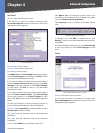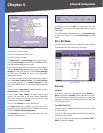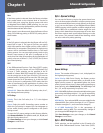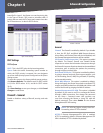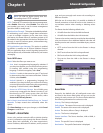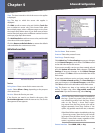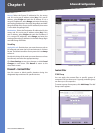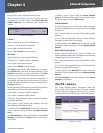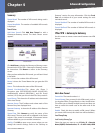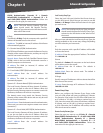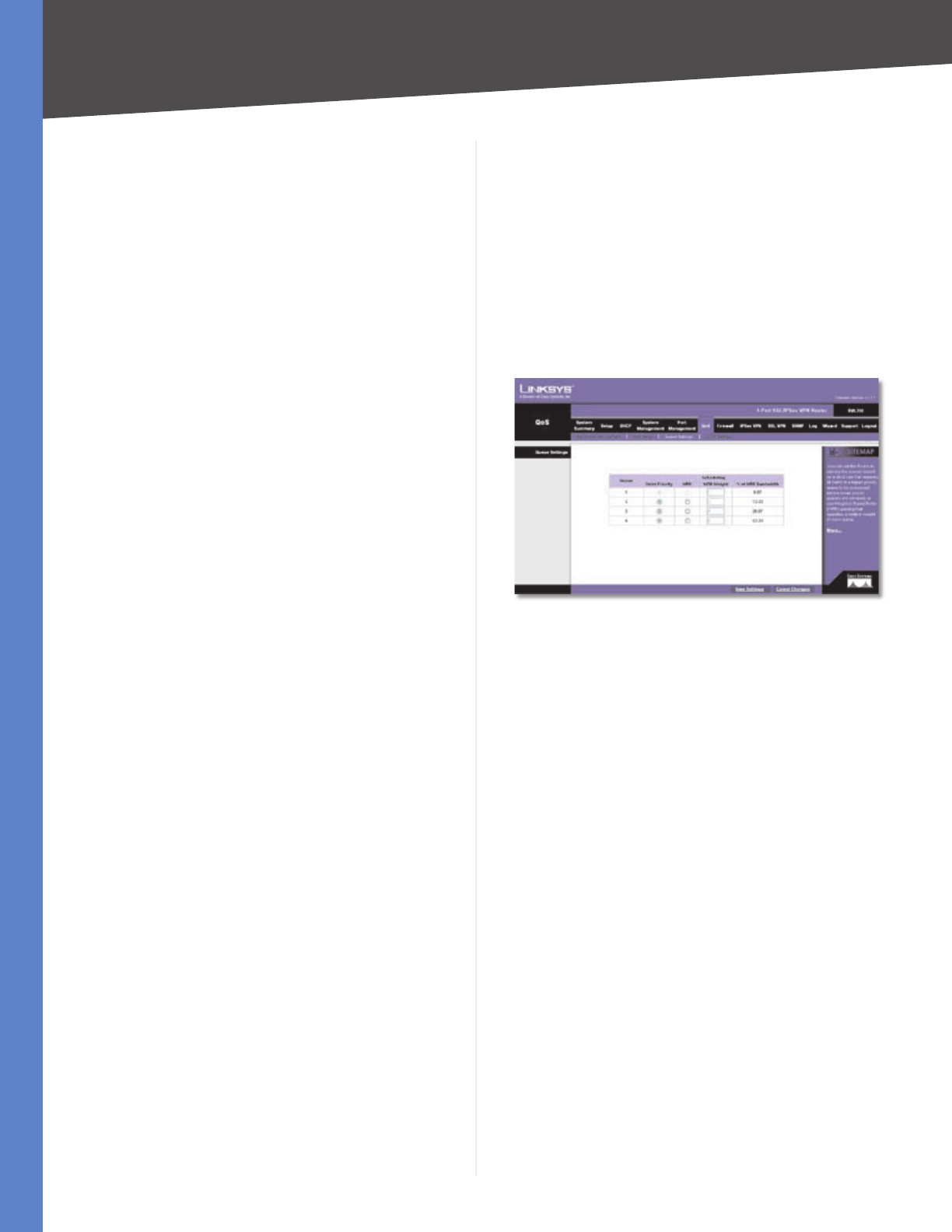
Chapter 4
Advanced Configuration
29
4-Port SSL/IPSec VPN Router
None
If the None option is selected, then the Router prioritizes
each packet based on the required level of service for
its four LAN ports, using four priority queues with strict
or Weighted Round Robin (WWR) queuing. You can use
these functions to assign independent priorities for delay-
sensitive data and best-effort data.
When a port is set to None mode, then the Router will not
check CoS VLAN tag priority or DSCP/ToS priority bits in
the IP header.
CoS
If the CoS option is selected, then the Router will use CoS-
based QoS in Layer 2. This type of QoS lets you specify
which data packets have higher priority when traffic is
buffered due to congestion. Data packets in high priority
queues will be transmitted before those in the lower
priority queues. You can map eight priority levels to the
Router’s input queues. If the port is configured as CoS
mode, then the order of importance for the application of
priority rules are as follows: 1) CoS, 2) DSCP, and 3) None
(port-based priority).
DSCP
If the Differentiated Services Code Point (DSCP) option
is selected, then the Router will use DSCP-based QoS
in Layer 3. Traffic priorities can be specified in the IP
header of a frame. With DSCP-based QoS, the Router can
use the priority bits in the Type of Service (ToS) octet to
prioritize traffic. If priority bits are used, the ToS octet may
contain three bits for IP Precedence or six bits for DSCP
service. If the port is configured as DSCP mode, then the
order of importance for the application of priority rules
are as follows: 1) DSCP, 2) CoS, and 3) None (port-based
priority).
Default CoS Select the default CoS priority value, 0 to 7,
with 0 being the lowest priority.
CoS Settings
Priority This is the CoS value, 0 to 7 (7 is the highest
priority).
Queue Select the traffic forwarding queue number to
which the CoS priority is mapped. You can designate up
to four traffic priority queues configured on the Queue
Settings screen.
To reset the CoS queue settings to their factory defaults,
click Restore Defaults. The defaults are 2, 1, 1, 2, 3, 4, and
4 for the Priority values, 0 to 7.
Click Save Settings to save your changes, or click Cancel
Changes to undo them.
QoS > Queue Settings
You can set the Router to service the queues based on a
strict rule that requires all traffic in a higher priority queue
to be processed before lower priority queues are serviced,
or you can set the Router to use Weighted Round Robin
(WWR) queuing, which specifies a relative weight of each
queue. WRR uses a predefined relative weight for each
queue, which determines the percentage of service time
the Router services each queue before moving on to the
next queue. This prevents head-of-line blocking, which
can occur with strict priority queuing.
QoS > Queue Settings
Queue Settings
Queue The number of the queue, 1 to 4, is displayed (4 is
the highest priority queue).
Strict Priority With Strict Priority, the Router services
the egress queues in sequential order, so all traffic in the
higher priority queues is transmitted before the lower
priority queues are serviced. To base traffic scheduling on
queue priority, select Strict Priority. The WRR Weight will
be 1, 2, 4, and 8, respectively, for queues 1 to 4.
WRR With WRR, the Router shares bandwidth at the egress
ports using scheduling weights 1, 2, 4, and 8, respectively,
for queues 1 to 4. If you want to use WRR queuing, select
WRR.
WRR Weight If you selected WRR, set a new weight for the
selected traffic class, within the range of 1 to 15. (Queue 1
is fixed at a weight of 1, and it cannot be changed.)
% of WRR Bandwidth This is the percentage of
bandwidth used by WRR. This automatically changes if
you change the WRR Weight for a queue.
Click Save Settings to save your changes, or click Cancel
Changes to undo them.
QoS > DSCP Settings
Traffic priorities can be specified in the IP header of a
frame. With Differentiated Services Code Point (DSCP)-



